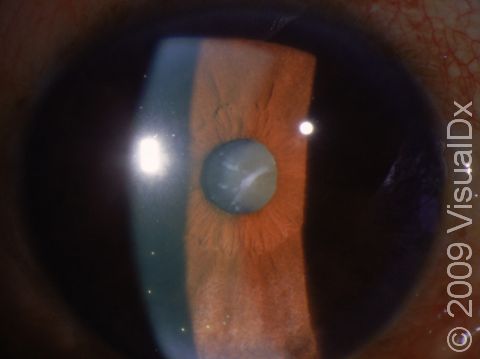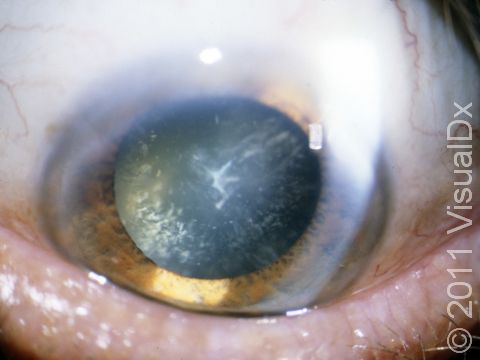Cataracts
A cataract is any clouding of the lens of the eye. This clouding can cause vision loss. The lens is composed of protein and water structured to allow light to clearly pass through. Changes to the structure of the protein result in a cataract. There are a few major types of cataracts, and the changes in vision associated with a cataract depend upon which part of the lens is affected. Normal aging of the lens results in cataracts, but the age that this occurs varies.
Who's At Risk?
Although all age groups can be affected, including babies (called congenital cataracts), cataracts are most common in older adults. Certain medical conditions can predispose individuals to cataract formation, such as diabetes and certain inherited metabolic conditions. Some medications may also result in the development of cataracts, such as long-term use of steroids at high enough levels. Trauma to the eye can cause cataracts to form more rapidly than they would have otherwise.
Signs & Symptoms
Only when the cataract becomes dense enough can it be seen with the naked eye. Since the lens is located behind the colored part of the eye (the iris), you must look in the pupil to see if there are any eye changes. Typically, the lens affected by the cataract will appear gray, grayish-white, or yellowish-tan and, rarely, the lens will be pearly white in appearance. Other symptoms of cataracts include:
- Vision that is cloudy, blurry, or there are multiple images.
- Glare that is bothersome, such as from headlights or streetlights.
- Trouble seeing at night.
- Changes in prescriptions for glasses needed frequently.
- Trouble judging distances, such as missing steps or having difficulty parking a car.
- Color vision that is altered, in that colors are faded, everything looks slightly brown, or shades of colors are difficult to discern.
Self-Care Guidelines
There are no proven ways to prevent cataracts, but there are several steps you can take that may help affect the development of cataracts.
- Avoid smoking.
- Wear sunglasses with ultraviolet (UV) protection.
- Avoid long-term exposure to x-rays.
- Avoid alcohol abuse.
- Maintain strict control of diabetes, if applicable.
- Use of antioxidant vitamins may slow the development.
Treatments
The medical professional will first confirm the diagnosis with a comprehensive medical examination. The main treatment for cataracts is surgery. Typically, the cloudy lens is removed and an artificial lens is implanted into the eye. Surgery often greatly improves vision in people with cataracts.
Visit Urgency
When vision is affected enough to interfere with your life and lifestyle, seek medical care (for example, if you are changing your glasses prescription frequently due to cataracts).
References
Duncan JL, Parikh NB, Seitzman GD. Cataract. In: Papadakis MA, McPhee SJ, Rabow MW, McQuaid KR, Gandhi M, eds. Current Medical Diagnosis & Treatment 2024. McGraw Hill; 2024.
Horton JC. Disorders of the eye. In: Loscalzo J, Fauci AS, Kasper DL, Hauser SL, Longo DL, Jameson JL, eds. Harrison’s Principles of Internal Medicine. 21st ed. McGraw Hill; 2022.
NIH. Cataracts. National Eye institute. https://www.nei.nih.gov/learn-about-eye-health/eye-conditions-and-diseases/cataracts. Updated 2023 Nov 15. Accessed 2024 Jan 26.
Last modified on January 26th, 2024 at 3:21 pm

Not sure what to look for?
Try our new Rash and Skin Condition Finder




